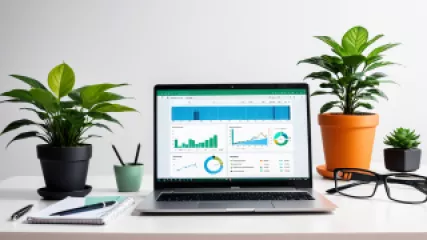How to Set Healthy Screen Time Boundaries for a Balanced Digital Life
How to Set Healthy Screen Time Boundaries for a Balanced Digital Life
In our increasingly digital world, finding the right balance between technology and personal well-being can be a challenge. As our dependency on screens and digital devices grows, the need to establish healthy screen time boundaries has become more crucial than ever. In this comprehensive guide, we'll explore practical strategies to help you regain control over your digital life and cultivate a more balanced and fulfilling lifestyle.
Recognize the Importance of Screen Time Boundaries
The proliferation of smartphones, laptops, tablets, and other digital devices has transformed the way we live, work, and communicate. While these technologies have brought many conveniences and opportunities, they have also contributed to a growing problem – excessive screen time and its detrimental effects on our physical, mental, and emotional well-being.
Excessive screen time has been linked to a range of health concerns, including:
- Eye strain and vision problems
- Neck and back pain
- Disrupted sleep patterns
- Increased risk of obesity and other physical health issues
- Heightened anxiety, depression, and other mental health challenges
- Reduced social interaction and interpersonal skills
- Decreased productivity and focus
By setting healthy screen time boundaries, you can mitigate these risks and reclaim your time, energy, and attention for more meaningful pursuits. This not only benefits your personal well-being but also strengthens your relationships, enhances your productivity, and fosters a greater sense of balance in your life.
Assess Your Current Screen Time Habits
The first step in establishing healthy screen time boundaries is to understand your current digital habits. Take a honest look at how much time you spend on your devices, what activities consume the majority of your screen time, and how this usage affects your daily life.
Consider the following questions:
- How many hours per day do you typically spend on your smartphone, laptop, or other digital devices?
- What specific activities or apps tend to occupy the majority of your screen time (e.g., social media, email, streaming, gaming)?
- Do you find yourself reaching for your devices during meals, while socializing, or during other activities that should be device-free?
- How does your screen time usage impact your sleep, productivity, physical activity, and relationships?
By honestly assessing your current screen time habits, you can identify areas that require the most attention and develop a plan to address them effectively.
Set Specific and Achievable Screen Time Goals
With a clear understanding of your current digital habits, you can now set specific and achievable screen time goals. These goals should be tailored to your individual needs and lifestyle, taking into account your unique responsibilities, preferences, and challenges.
Some examples of screen time goals include:
- Limiting daily smartphone usage to a maximum of 2 hours
- Reserving the last hour before bedtime as a device-free time for relaxation and sleep preparation
- Designating certain days or times of the week as "screen-free" periods for focused work, quality time with loved ones, or outdoor activities
- Reducing the time spent on social media or other time-consuming apps by 30 minutes per day
- Implementing a "no devices at the dinner table" rule to encourage more meaningful conversations and connections
Remember, the key to success is to set achievable goals that align with your lifestyle and priorities. Start small, celebrate your wins, and be willing to adjust your goals as needed.
Develop Digital Detox Strategies
Reducing your screen time and establishing healthy boundaries can be challenging, especially when digital devices have become so deeply ingrained in our daily routines. Developing effective digital detox strategies can help you break free from unhealthy screen time habits and reclaim your time and attention.
Here are some strategies to consider:
Implement Device-Free Zones and Times
Designate specific areas in your home, such as the bedroom or dining room, as device-free zones. Additionally, set aside device-free periods during the day, such as during mealtimes, family time, or before bedtime. This helps create clear boundaries and reduces the temptation to constantly engage with your devices.
Use Screen Time Tracking and Limiting Apps
Many smartphones and operating systems now offer built-in screen time tracking and limiting features. Utilize these tools to monitor your daily screen usage, set app limits, and receive notifications when you've reached your predetermined time limits. This can help you become more mindful of your digital habits and encourage you to prioritize non-screen activities.
Engage in Digital Detox Challenges
Consider participating in digital detox challenges, such as a "no-phone day" or a "social media-free week." During these challenges, refrain from using specific devices or apps for a set period. This can help you break free from your habitual screen time patterns and rediscover the joys of being present in the moment.
Establish Routines and Schedules
Create a daily routine that prioritizes non-screen activities, such as exercise, reading, or engaging in hobbies. Incorporate specific times for checking emails, social media, or other digital tasks, and strictly adhere to these schedules to maintain control over your screen time.
Identify and Limit Trigger Activities
Reflect on the specific activities or apps that tend to draw you in and consume the majority of your screen time. Once identified, make a conscious effort to limit your engagement with these triggers or find alternative, less time-consuming ways to satisfy your needs.
Practice Mindfulness and Self-Awareness
Develop a heightened sense of self-awareness by practicing mindfulness techniques, such as meditation or deep breathing exercises. This can help you become more attuned to your emotional and physiological responses to screen time, enabling you to make more conscious decisions about when and how you use your devices.
Cultivate Healthy Alternatives to Screen Time
Reducing screen time is not just about cutting back on digital activities; it's also about finding healthy and fulfilling alternatives that enrich your life. By engaging in a variety of non-screen activities, you can cultivate a more balanced and purposeful lifestyle.
Some examples of healthy alternatives to screen time include:
- Physical activity: Engage in regular exercise, such as going for walks, practicing yoga, or participating in sports.
- Creative pursuits: Explore hobbies like painting, drawing, writing, or playing a musical instrument.
- Reading: Immerse yourself in books, magazines, or newspapers to stimulate your mind and expand your knowledge.
- Social interaction: Spend quality time with friends and family, participate in community events, or join a club or group that aligns with your interests.
- Mindfulness and relaxation: Practice meditation, engage in deep breathing exercises, or spend time in nature to reduce stress and promote overall well-being.
- Skill-building: Learn a new language, take a cooking class, or explore a subject that has always piqued your curiosity.
By prioritizing these non-screen activities, you can not only reduce your overall screen time but also cultivate a more fulfilling and balanced lifestyle.
Manage Your Digital Environment
In addition to developing personal strategies, it's important to manage your digital environment to support your screen time boundaries. This involves making adjustments to your devices, online accounts, and even your physical workspace to minimize distractions and temptations.
Here are some steps you can take to manage your digital environment:
Optimize Device Settings
Customize the settings on your devices to minimize notifications, reduce screen brightness, and disable features that may encourage constant engagement. Consider turning on "Do Not Disturb" modes or enabling "Grayscale" settings to make your devices less visually appealing.
Declutter Your Digital Spaces
Regularly review and remove any apps, email subscriptions, or online accounts that are no longer serving you or contributing to your overall well-being. Streamline your digital spaces to reduce the number of potential distractions and temptations.
Create a Distraction-Free Workspace
If you work from home or find yourself frequently using a computer for work, create a dedicated workspace that is free from unnecessary digital distractions. Consider using a second monitor to separate work and personal activities, and avoid keeping your smartphone within reach during focused work sessions.
Leverage the Power of Technology
While it may seem counterintuitive, you can actually leverage technology to support your screen time boundaries. Utilize productivity apps, browser extensions, or website blockers to limit access to time-consuming or distracting websites and apps during specific times of the day.
Maintain Accountability and Consistency
Establishing healthy screen time boundaries is an ongoing process that requires commitment, flexibility, and a willingness to adapt. To ensure long-term success, it's essential to maintain accountability and consistency in your approach.
Here are some strategies to help you stay on track:
Enlist the Support of Loved Ones
Share your screen time goals and strategies with your family, friends, or colleagues. Ask for their understanding and support in helping you adhere to your boundaries. Encourage them to hold you accountable and provide encouragement along the way.
Track and Reflect on Your Progress
Regularly review your screen time usage and evaluate your progress towards your goals. Celebrate your successes, identify areas for improvement, and be willing to adjust your strategies as needed. Keeping a journal or using tracking apps can help you stay motivated and focused.
Adopt a Growth Mindset
Recognize that establishing healthy screen time boundaries is a journey, not a destination. Expect setbacks and be prepared to learn from them. Adopt a growth mindset that embraces challenges as opportunities for learning and self-improvement.
Seek Professional Support if Needed
If you find yourself struggling to manage your screen time or experiencing significant negative impacts on your well-being, consider seeking professional support. Mental health counselors, therapists, or digital wellness coaches can provide valuable guidance and resources to help you overcome technology addiction or compulsive digital habits.
Conclusion: Embrace a Balanced Digital Life
In a world where technology has become an integral part of our daily lives, it's crucial to find a healthy balance between digital engagement and personal well-being. By setting healthy screen time boundaries, cultivating meaningful alternatives, and managing your digital environment, you can reclaim your time, attention, and overall quality of life.
Remember, the journey to a balanced digital life is not a one-size-fits-all solution. It requires self-reflection, experimentation, and a willingness to adapt. Embrace the process, celebrate your progress, and never hesitate to seek support when needed. With dedication and perseverance, you can create a digital life that serves you, rather than one that controls you.
Ultimately, the ability to establish healthy screen time boundaries is a powerful tool for personal growth, improved mental and physical health, and a more fulfilling lifestyle. Embark on this journey, and unlock the potential for a balanced, meaningful, and technology-enriched life.






